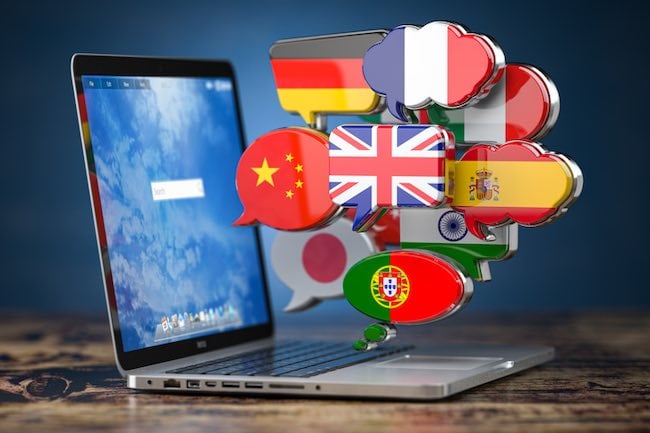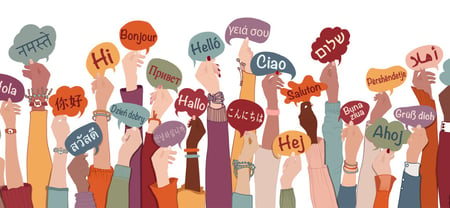
Expanding your business into a new language market is a major growth opportunity. It’s an exciting time when you’re set to make your mark on a new audience and begin your globalization mindset.
At LinguaLinx, as a Language Service Provider (LSP), we also know this excitement is offset by the realization of the complex challenge ahead.
From understanding local culture to adapting your marketing approach, successful localization goes far beyond just translating words. One of the biggest strategic questions is which content should you prioritize localizing first?
Localizing everything at once is rarely a cost-effective possibility. Instead, you need to take a focused, strategic approach to connect with customers early in your time in the new market.
So, where do you start? Below, we break down the content you should prioritize for localization, why this works and also, at the end, present a very high-level localization plan outline.
1. High-Impact, Revenue-Driving Pages
Your first priority should be the content most directly tied to your business goals. These are the pages that convert into sales. These include your:
- Homepage
- Product/Service pages
- Pricing pages
- Checkout or lead capture forms
- Calls-to-action (CTAs)
These are the first touchpoints most new customers will have with your brand. Localizing these pages means users immediately understand what you offer, how to buy, and why it’s valuable, without language being a barrier.
Be sure to adapt elements like pricing, shipping information, currencies, and legal disclaimers to in line with the local market and expectations.
Also, don’t just translate marketing and advertising material, transcreate it. This means adjusting your messaging to the local community, paying attention to cultural nuance rather than direct translation.
2. Customer Support and FAQ Content
Next, prioritize your content that supports the customer experience. If potential or existing customers can’t find help in their language, they’ll leave your site and look for the help elsewhere.
Focus on localizing:
- FAQ pages
- Knowledge base or help center articles
- Live chat scripts and email templates
- Return/refund policies and terms of service
A positive support experience builds trust and loyalty, especially in unfamiliar markets. Providing well-localized self-service options also reduces the burden on your support team.
3. SEO-Focused Content
Organic search traffic is critical for long-term success. Localizing for SEO isn’t just about translating keywords—it’s about understanding what your target audience is actually searching for in their language.
Start with:
- Top-performing blog posts
- Guides and e-books
- Product-related search content
- Local landing pages for key markets or cities
Use keyword research tools like Semrush, or local search engines to identify relevant terms in the target language.
Often, direct translations of English keywords won’t match local search behavior, so localization here must be more strategic. Localizing this content also helps build domain authority and improves your overall visibility in the new region.
4. Email Sequences and CRM Automations
If you already have email marketing or CRM flows, these should be localized for a consistent user experience (UX). This includes:
- Welcome series
- Abandoned cart emails
- Post-purchase follow-ups
- Re-engagement campaigns
These touchpoints are often overlooked but are vital for retention and upselling. When customers see content tailored to their language and culture, your brand feels more trustworthy and established.
5. Social Media and Paid Ads
If you're investing in paid advertising campaigns, social content or pay-per-click (PPC) ads, these should be localized to maximize your ROI. That includes:
- Ad copy
- Landing pages associated with campaigns
- Social posts and community engagement replies
Localization here can be more experimental and fast-paced, but you still benefit from native language nuance. Local slang, humor, and cultural references can dramatically boost engagement and performance.
6. User-Generated Content and Reviews
Social interaction with your brand is powerful when entering a new market. If you have user testimonials, reviews, or case studies that resonate with the local audience, prioritize translating those too.
While those are strong, the best thing to do is to gather new testimonials from local customers once you gain traction in the marketplace. People trust people who sound like them.
A Strategic Localization Rollout Plan
Obviously, every business is different, but we like our advice to be as practical as possible. With that in mind, here’s a very high-level localization roadmap:
Phase 1 (Weeks 1–4)
- Homepage
- Key product/services pages
- Checkout and contact pages
- Essential legal info
Phase 2 (Weeks 5–8)
- Top 10 FAQ/help articles
- Best-performing blog posts
- Key email flows
- Localized ads (if running paid ads)
- Key social media
Phase 3 (Ongoing)
- Expand blog and SEO content
- Full social media calendar
- Local landing pages
- Regional PR or influencer outreach
Localize with Purpose
Localization is a growth strategy and not a checklist. Focus on what will have the greatest impact, so that you can get the ball rolling.
The goal isn’t to translate everything all at once, but to translate the right things in the right order. And you want to begin with the content that moves the needle in the customer journey.
By being strategic in your localization process, you’ll be able to build momentum, learn from the market, and direct your efforts into the places that are going to make the biggest difference to the business.
Are you localizing your business and looking for a strategic partner to help with the process? If so, we’d love to talk to you.
Consultations are free and there’s no obligation. You’re in safe hands with us as we’re ISO 17100 and ISO 9001 compliant, have over twenty years of professional translation experience, and have earned the trust of organizations around the world.






